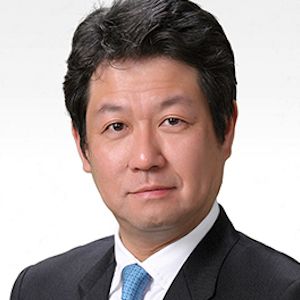Article
Study Suggests Combination of Phototherapy, Apremilast Effective for Psoriasis Vulgaris
Author(s):
A combination therapy approach may be useful for psoriasis treatment, though an 8-week regimen may not be long enough.
Akimichi Morita, MD, PhD

A recent study found that 8-weeks of apremilast and phototherapy as a combined treatment may be sufficient with psoriasis vulgaris, but it may require a longer regimen length.
Patients with moderate to severe psoriasis vulgaris are frequently treated with apremilast—an oral phosphodiesterase-4 inhibitor—and phototherapy. However, their combined use’s safety and efficacy were not viewed to be properly studied prior to this research.
This study into their combined use was led by Akimichi Morita of the Nagoya City University Graduate School of Medical Sciences Department of Geriatric and Environmental Dermatology.
“Phototherapy has many advantages in the treatment of psoriasis, but continued use is inconvenient because the effects of the therapy appear only after a long time, and patients are required to frequently visit the clinic for irradiation,” Morita and colleagues wrote. “In this study, the combination of apremilast and phototherapy demonstrated sufficient therapeutic effects in psoriasis despite the reduced frequency of visits to the clinic, which may have considerable implications in clinical practice.”
The investigators’ research compared the safety and efficacy of only phototherapy (monotherapy) with that of the combination of apremilast and phototherapy (combination).
Background and Research
The investigators used a multicenter, randomized active-controlled study that was open-label and parallel-group, through 4 institutions in Japan between November of 2018 and February of 2020. Inclusion criteria for patients consisted of being 20 to 80 years old, having a moderate to severe psoriasis vulgaris diagnosis, and having an inadequate topical treatment response.
The researchers’ primary endpoint for the study—from baseline to 8 weeks of treatment—was a Psoriasis Area and Severity Index (PASI) score improvement rate. There were 7 secondary endpoints for their research, including:
- The PASI score and improvement rate from baseline to 4 and 8 weeks after treatment;
- Number and percentage of patients achieving PASI scores with ≥90%, ≥75%, and ≥50% improvements, or PASI90, PASI75, and PASI50
- PASI score changes from baseline to each evaluation time point
- BSA changes from baseline to each evaluation time point;
- sPGA scores at baseline and at each time point;
- Percentage of study participants having an sPGA score of 0 (disappeared) or 1 (almost disappeared)
- Changes in EuroQol 5-dimensions 5-level (EQ-5D-5L), Dermatology Life Quality Index (DLQI), and visual analog scale (VAS) scores regarding itchiness from baseline to each evaluation time point
The investigators had the patients receive apremilast as 10, then 20, then 30, then 40, then 50 mg of apremilast on the first 5 days of the study, with 60 mg each day beginning on the sixth day. For phototherapy, NB-UVB treatment was administered 2 times per week.
Study Results
In total, there were 42 participants recruited for the study, with 29 in the combination arm and 13 in the monotherapy arm. The results of the study found that the combination group reported significantly lower PASI scores by 4 and 8 weeks. The combination group also reported more patients achieving a PASI score improvement of ≥75% by 8 weeks.
By week 8, they did not observe a statistically significant difference between both groups. The investigators found that both the combination and the monotherapy group had a significant decrease in BSA. The combination group data leaned toward a greater BSA reduction. Adverse events (AEs) were also reported more often in the combination arm than the monotherapy arm of the study.
“Our findings indicate that phototherapy as monotherapy was insufficient in patients with high baseline BSA, and concomitant administration of apremilast improved the outcomes,” they wrote. “However, an 8-week treatment regimen may be insufficient for inducing subjective improvement.”
The study, “Efficacy and safety of apremilast and phototherapy versus phototherapy only in psoriasis vulgaris,” was published online in the Journal of Dermatology.





